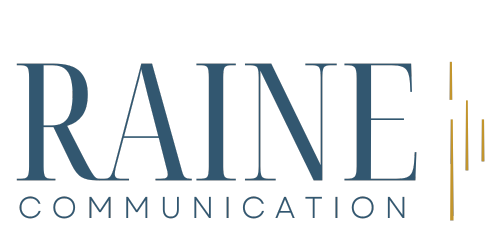How to gather volunteer, donor, and participant stories
You know that stories are central to nonprofit donor communications – or really, any communications.
In fact, in his book The Storyteller's Secret, communication coach Carmine Gallo calls stories "the fundamental building block of communication."
Stories build relationships between you and your audience and help your audience understand what you do and who you help. When you are working hard to achieve an important mission, stories are everywhere.
Many of the best nonprofit stories are told not from the nonprofit’s perspective, but from the perspective of people who interact with the nonprofit in some way. These stories from volunteers, donors, and participants can illustrate your mission in a way that speaks directly to your target audience.
stories are powerful tools for a nonprofit communicator.
I’d like to offer an efficient process for gathering information that you can turn into a wonderful testimonial or story.
This is an asynchronous process, which might not offer the same level of interaction and stewardship that a phone interview might provide, but it can be easier for busier individuals who can't make time for a call (or visit). It can also allow you to gather many potential stories at once.
Here's what to do the next time someone volunteers to share their story to help inspire people to get involved with your cause:
Create a list of questions that will help the person think about and describe their support or participation.
Here are some ideas to ask a donor or volunteer:
Why did you begin supporting [this nonprofit]?
Is there a particular moment when you decided that [this nonprofit's mission] was important to you?
Why do you believe in the mission?
What would you say to other people considering supporting [nonprofit]?
Here are some ideas to ask a program participant:
How did you become connected to [this nonprofit]?
Why did you begin participating with [nonprofit]?
Have you found your participation with [nonprofit] beneficial?
What would you say about the [people/programs] at [nonprofit]?
Send the questions to the person in a way that works for them. Email might be easiest for you, but you can also consider text or even a letter in the mail.
Be sure to also include a consent form that states how the story might be used (blog post, website quote, etc.) and ask them to sign and return in order to give permission to use their story in promotional materials.
Ask the person to share a high-quality image to go with the written testimonial or story.
"Action" shots make for great images to accompany donor stories, as it adds to the character-building of the entire piece. Suggest they have someone take their photo while they are doing something they love (like walking, gardening, or even just laughing), preferably outdoors but not in harsh sunlight – just before sunset is a good time to take photos. Find tips on how to DIY your nonprofit photography in this post.
Give participants a few ways to respond to the questions so they can choose a response method that works for them. They can write the answers and mail it back to you, they can respond to an email, or they can even record their answers using a Voice Memo that they can email or text to you.
Review the answers and pull out quotes that stand out to you. This might be all you need depending on the communication, or you might want to build a story using their answers. Starting with the standout quotes can be a great writing prompt to develop a story. Be sure to use your own words and avoid filling in the story with too many direct quotes.
You can also consider using the Q&A almost directly with editing for clarity and brevity.
Share the draft with the person to get their approval before publishing.
Publish the story! Post the full story on your website, share it in an email, or include a quote on social media along with the testimonial. There are a lot of ways to share a single story.
Follow up with a phone call to say thanks and let the person know how their story contributed to the mission they care about.
let’s connect on Instagram:
create a story LIBRARY
If you have the resources, you might consider reaching out to a wider group of people, perhaps through an email or letter, to ask them to share their story. Go ahead and include your questions in the request – this is a way to uncover wonderful stories and create engagement at the same time. Just let them know up front that even if you don't have an opportunity to share each story, it's incredibly meaningful to hear about their connection to your organization.
Save these responses in a single document, like an excel spreadsheet, and revisit them when you need a story to share. Make sure to reach out to each person who contributed and say thanks.
You may find that a story is shared by a particularly good storyteller – this person should be considered for in-depth interview articles or even podcast or video content at a later date.
I hope you uncover some truly moving stories.
A version of this post originally appeared in my newsletter that arrives in inboxes every other week.
To see content like this and more ideas on how good storytelling can create connection, inspire audiences, and help you build a more sustainable source of support for your nonprofit, please subscribe.
Comments or questions? Please DM me on social media or contact me here.
Photo at top by Debby Hudson on Unsplash









